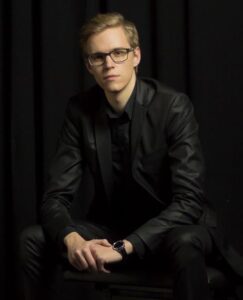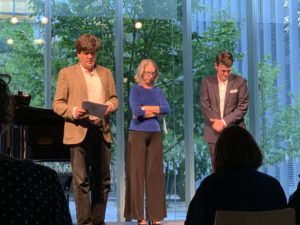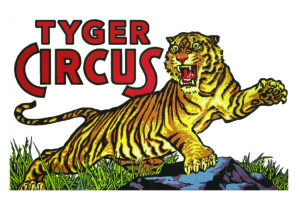In the big picture for us fancy-schmancy monkeys, music is something much like howling is for wolves—a group activity initiated by social animals expressly to create group coherence. Looking more deeply, music for humans seems to come in two basic kinds: music that people move to, and music that people are moved by.
The first is directly related to dance and other forms of social physical movement. This is music with an overt beat of some kind, intended to get a group of listeners physically moving together as one. Most popular music seems to serve this kind of function. You might call it Outside Music.
The other kind of music articulates an overt expressive affect or emotional progression intended to get a group of listeners simultaneously feeling as one. This is music related to a kind of communal meditation historically connected to various religious rituals. A good deal of classical music seems to serve this kind of function. You might call it Inside Music.
There is a further distinction to be made. Human groups tend to develop themselves through social rituals that involve elements of either exclusivity or inclusivity. Exclusive rituals are the ones that require special knowledge or status to be a part of. For access to those, you need to know the Secret Handshake. With exclusive rituals related to music, if you hear the references, you’re in. If you don’t, you’re out. Most utilitarian music works in this way, serving as aural cues for when to sit, stand, or sacrifice a chicken. A lot of court and church music from the Middle Ages and the Baroque—hauntingly beautiful though it may be—is nonetheless Secret Handshake music.
Inclusive rituals are the ones that don’t require any special knowledge or status to be a part of. They bring people together directly by tapping into the more basic primal instincts shared by everyone. The “mob feel” of sports events works this way. The peripherals of knowledge about the game at hand, or even the game itself, are really secondary to the “mob feel” that’s palpable in the stadium. Rituals involving music can work this way too, only with music—and especially with classical music—that mob feel is more about subtle contemplation on human vulnerability than a tribalistic roar of “We’re number one!” or “Kill the Ump!” Often classical music’s communal contemplation can lead to something I call the Collective Breath. This is a name for that indescribable feeling experienced at the ends of significant public emotional statements articulated abstractly in music. In such moments there is a kind of communal arousal in the charged silences between and after moments of inspired ritualistic musical activity. Gathering moments like these is fundamentally the social purpose of music.
What I see in much of the music of the classical repertoire is Inclusive Inside Music—social music intended for communal contemplation on the human condition. It is basically a form of expressive research, and encoded in it is emotional understanding that transcends time and place somewhat in the same way scientific knowledge does.
Music, because of its abstract nature, has the capability to engage our emotions directly in ways that other arts cannot. It is (as previously stated) our fancy-schmancy monkey “howling”—an essential cultural tool for creating group coherence. Of course different individuals have different expressive tastes. And yet, while emotional reactions to reactive responses might vary from person to person or culture to culture, human reactive responses to emotional stimuli are on average quite similar. And because of this, the music of the classical repertoire has been and remains capable of embodying emotional understanding that is broad-based and universal to some degree. It is indeed remarkable that the power of this expression and meaning can connect beyond time and place and continues to do so even now as part of our understanding of who we are as humans.
The classical canon ultimately serves as a talisman that connects us to a collective expressive experience, and, in doing so, helps us imagine our future together. Western classical music certainly isn’t the only talisman of this kind. It is a good and important one, though. For it to remain vital it will need to keep growing.
 On December 11 at 6pm, Slovenian pianist Jan Satler will perform Howard Frazin’s Music for the End of Winter as part of his Winter-Klavier program at Brucknerhaus Linz in Austria. The concert will take place in the Mittlerer Saal Foyer and also include music by Debussy, Sibelius, Liszt, Bartók, and Till Alexander Körber.
On December 11 at 6pm, Slovenian pianist Jan Satler will perform Howard Frazin’s Music for the End of Winter as part of his Winter-Klavier program at Brucknerhaus Linz in Austria. The concert will take place in the Mittlerer Saal Foyer and also include music by Debussy, Sibelius, Liszt, Bartók, and Till Alexander Körber.

